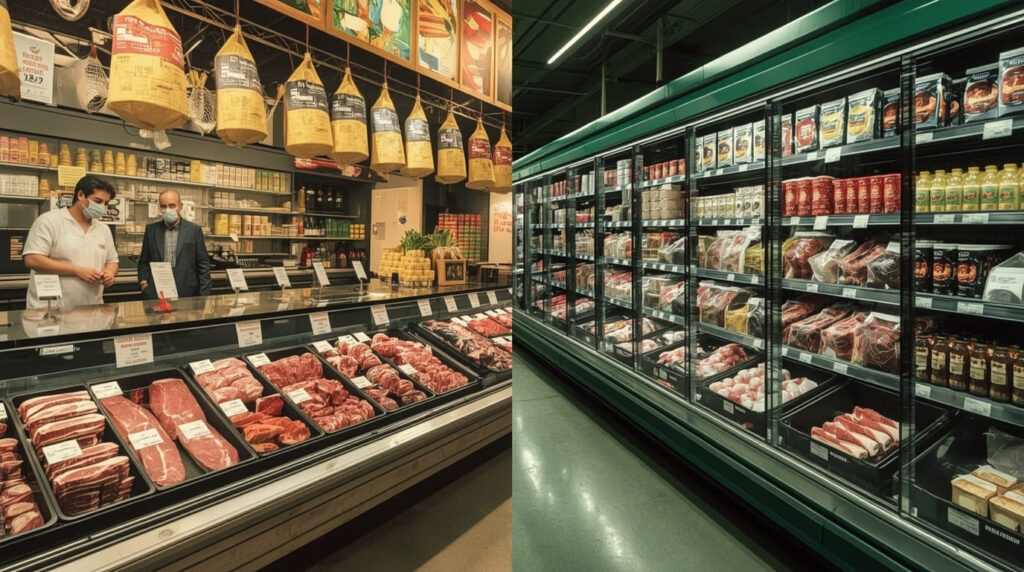How to Make Food Safety Fun: A Guide for Parents
Bored of repeating the same food safety rules to your kids? These fun food safety games bring important lessons about safe eating into exciting, hands-on activities.
Parents and teachers can turn tiring lectures into playful learning moments using this Stay Safe playbook.
Key Takeaways
- Turn every safety rule into a game to make the lesson memorable.
- Use visual aids like glitter to explain how "invisible germs" work.
- Start with one simple food safety concept at a time, like handwashing.
- Repetition through play helps kids build lifelong healthy habits.

What Does Food Safety Mean for Kids? (Keeping Tummies Happy)
Food safety is all about keeping our food clean and safe to eat. It’s a way to make sure that what we eat helps us grow strong and stay healthy.
For kids, food safety means following some simple rules like washing hands, keeping raw meat away from veggies, and refrigerating leftovers. Talking about food safety doesn’t need to be scary. Instead of warning about “bad germs,” explain it with a positive tone.
For example, tell your child: “We wash our hands to get rid of invisible germ invaders that can give us a tummy ache.” With this approach, safety sounds helpful instead of overwhelming.
By teaching your kids early, you’re helping them build habits that will protect them in the long run. They’ll not only stay healthy but also feel confident in the kitchen as they get older.
Fun Food Safety Activities for Little Kids (Ages 3-6)
Game #1: The "Glitter Germs" Handwashing Challenge
- Glitter
- Cooking oil
- Soap
- Running water
How to Play:
- Rub a small amount of oil on your child’s hands. Sprinkle glitter over the oil.
- Ask your child to try washing the glitter off with just water.
- Show them how soap helps remove the "germs" (glitter).
The Stay Safe Lesson:
Glitter shows how germs stick to our hands and why soap is important to wash them away. This simple activity introduces the habit of thorough handwashing in a fun, memorable way.
Game #2: "Red Light, Green Light" in the Kitchen
- Colored paper (red and green)
- A safe cooking space (like a clean kitchen counter)
How to Play:
- Explain that red light zones are “no-touch” areas (like the stove) where kids need to stay back. Green light zones are safe areas where they can help (like washing veggies).
- Create red and green markers and place them in these zones.
- Play a quick game where kids call out the zone as you point to the area.
The Stay Safe Lesson:
This game helps young kids understand which areas in the kitchen are safe for them and which areas they need to avoid. Over time, they’ll naturally respect boundaries by associating these zones with colors.
Engaging Food Safety Projects for Big Kids (Ages 7-12)
Project #1: The Cross-Contamination Catcher
- Colored cutting boards (or printable colored paper)
- Food coloring
- A bowl of water
How to Play:
- Assign each cutting board a food type (e.g., green = veggies, red = meat).
- Add a drop of food coloring to the water to represent "germs."
- Demonstrate how using the same board (or dipping tools into the same water) mixes colors, spreading germs between foods.
The Stay Safe Lesson:
This activity visually explains the danger of cross-contamination and the importance of using separate tools for raw meat and produce. Kids understand the risks without needing a lengthy lecture.
Project #2: The Kitchen Detective Food Safety Crossword
- Printable crossword sheet (designed with key food safety words)
- Pen or pencil
How to Play:
- Create clues based on food safety terms like "separate," "wash," "chill," and "cook."
- Have your kids complete the crossword with the correct answers.
Example Clues:
- "What do we do with vegetables before eating them?" (Answer: Wash)
- "What do we put leftovers in to keep bacteria out?" (Answer: Fridge)
The Stay Safe Lesson:
Crossword puzzles make learning fun while reinforcing vocabulary and concepts about food safety.
Building a Foundation of Lifelong Safety
Children are most likely to remember food safety lessons when they’re taught through games and play. These activities make learning enjoyable while helping them form habits that last a lifetime.
As a parent, you are their best teacher. Your creativity and effort can inspire your kids to take food safety seriously while having fun.
Ready for the next step? Our Health-Conscious Family’s Guide to Food Safety Indicators has everything you need to grow your family’s food safety knowledge even further.
Frequently Asked Questions
How can I make food safety fun?
What are the 5 basic food safety rules for kids?
- Clean—Wash hands and surfaces often.
- Separate—Keep raw meats away from other foods.
- Cook—Heat foods to the right temperature.
- Chill—Refrigerate leftovers promptly.
- Ask First—Check with a parent before helping or tasting.
What is the meaning of food safety for kids?
At what age should I start teaching my child about food safety?
How can I explain the dangers of raw meat without scaring my child?
Are there any good books about food safety for children?
What's the most important food safety rule to teach a toddler?
How can I get my child to wash their hands properly before eating?
My child is a picky eater. How does food safety apply?
How can I involve my older kids in meal prep safely?
References
Ready to Keep More Food Fresh?
- Get our 1-page printable checklist
- Join the “Stay Fresh” email list
- See the full Triple-S Method series
